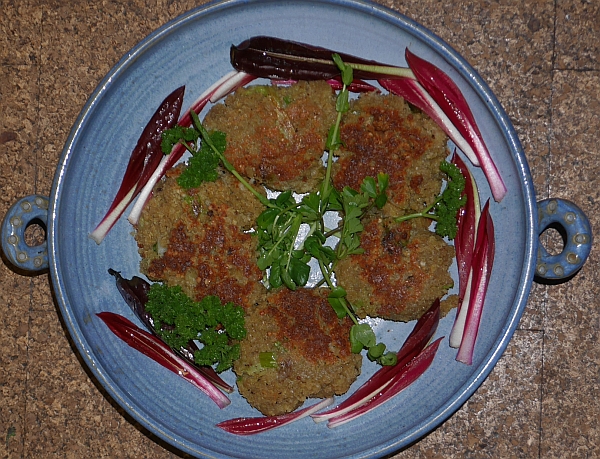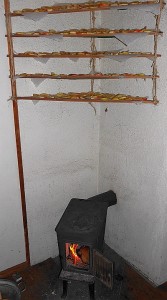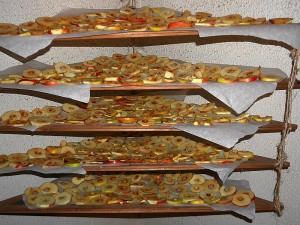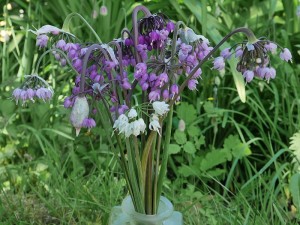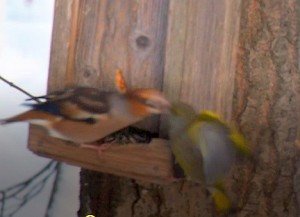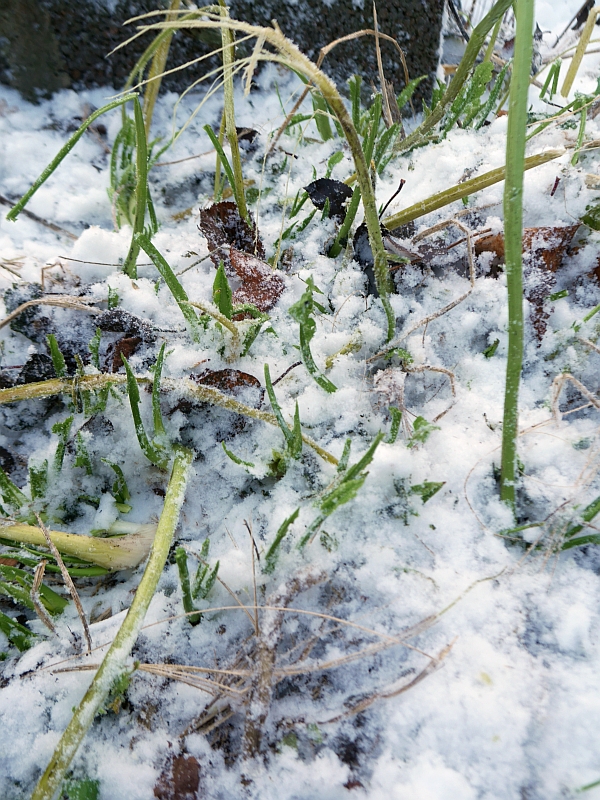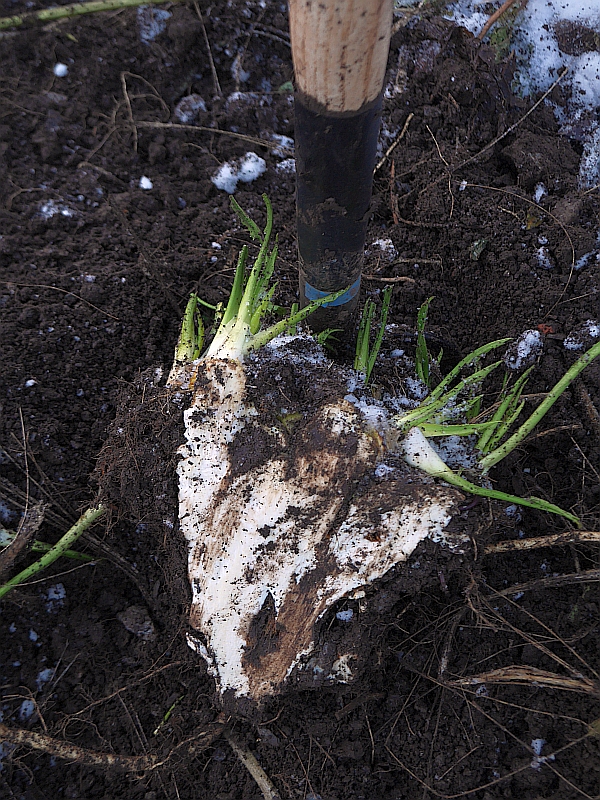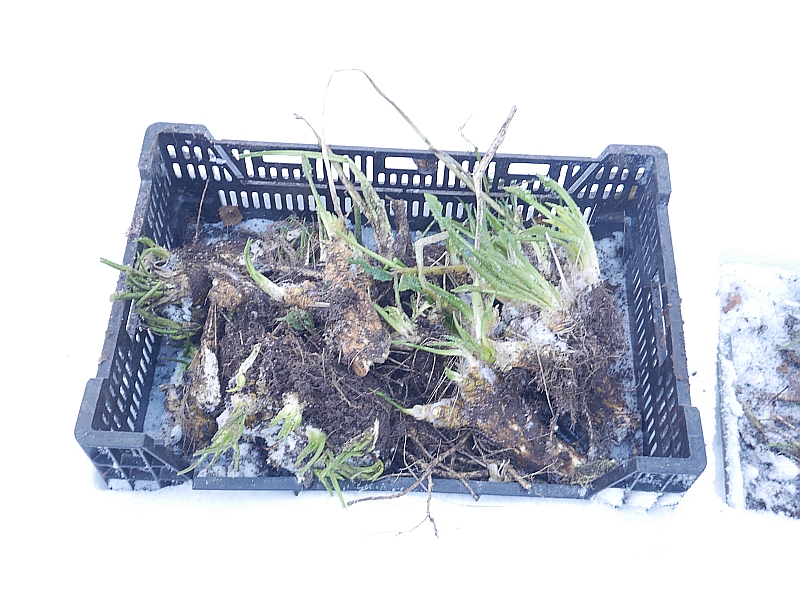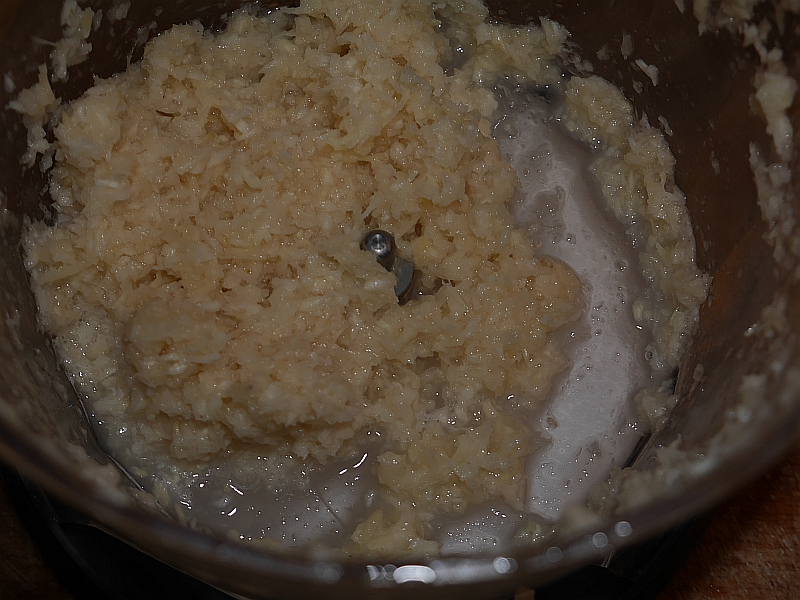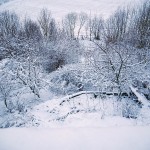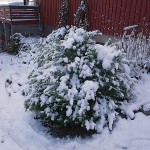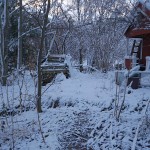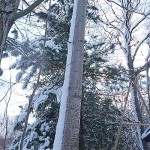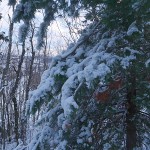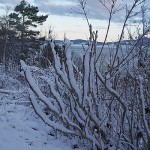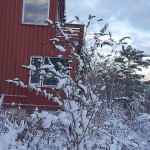A long way from home, I composed these Malvik grown quinoa patties tonight and they were pretty damned good! I boiled the quinoa, mixed with fried leek, garlic, chili, Angelica seed spice, salt and pepper and then added some egg so that the mix could be formed into patties, fried over the wood stove and decorated with some colourful greens from the cellar: parsley, a wild celery from New Zealand, Apium nodiflorum (fool’s watercress), unfool’s watercress and chicory “Rossa de Treviso”…
Monthly Archives: December 2016
First load of wood dried apples
My first (of many) loads of apples drying over the wood stove!
I’m 100% self-sufficient in fruit and never buy bananas, oranges etc. and don’t use a freezer. When the apples are properly dried, they can be stored for several years (so if there’s a bad apple year next year I also have fruit next year…it’s a good year this year so I dry as much as possible). When fresh fruit isn’t available (typically from February to June), I use only dried fruit. Dried apples are fantastic to eat as they are and are popular with guests as snacks and also a perfect present for family and friends. I eat a home made muesli for breakfast every morning – large organic oat flakes that I buy in large sacks and I mix with various nuts. I soak a mix of dried fruit (apple, cherry, bilberry, plums, saskatoons etc.) and use them on the muesli.
Bright night lights
A bunch of nodding edimental onions
Tor Smaaland’s “Your Dream Garden” from 2004
The first time my garden was featured in a book was in former Norwegian TV gardener and gardener for the King, Tor Smaaland’s 2004 book “Din drømmehage”. The book was based on Tor’s travels around Norway visiting gardens and their owners. I remember his visit well as he was like a whirlwind almost running around the garden and talking at full throttle…he told me that he was a landscape architect and new little about plants and then he was gone again…so quick was he that I didn’t get a single picture of his visit! Most of the text about the plants was written by me (see pdf at the bottom of this page!).
I loved his amusing description of me and my garden (first in Norwegian below and then translated):
«Hage til å spise opp: Som Norges kanskje eneste moderne ikke-munk har engelskmannen Stephen Barstow brukt de siste tiåra på å anlegge et slags fri klosterhage ved Malvik utenfor Trondheim med noe mellom 1500-3000 planter, avhengig av hvordan vinteren har fart over hagen. Her er 30 av hans favoritter – og ganske uventet bruk av dem» ;)
(Garden to be eaten up: As perhaps Norway’s only modern non-monk, Englishman SB has over the last 10 years created a kind of free style monastery garden in Malvik outside of Trondheim with somewhere between 1,500 and 3,000 plants, dependent on the ravages of the winter. Here are 30 of his favourites and their rather unexpected uses)
You will notice quite a few of the plants that finally ended up in my book and many of which I now call Edimentals; for example: variegated ground elder (variegert skvallerkål), nodding onion (prærieløk), seiersløk (Allium victorialis), udo (Aralia cordata), giant bellflower (storklokke), daylilies (dagliljer), Hosta, golden hops (gulhumle), Malva (kattost), ostrich fern (strutseving), Bath asparagus (Ornithogalum pyrenaicum), bistort (ormrot), rubber dandelion (gummiløvetann), bulrush (dunkjevle) and nettles (nesle).
Birds in the garden
It was difficult to concentrate at the weekend as there was so much happening outside the living room window…here’s a selection of still pictures and videos of birds eating wild food and at and under the bird feeder!
Greenfinch taking food from the bill of a hawfinch
Following up on yesterday’s film, here we see a greenfinch trying to take morcels of seed from a hawfinch (kjernebiter)..I saw this several times today and yesterday…it happens very quickly, but a still picture (below) seems to show the greenfinch’s beak inside the beak of the hawfinch and the greenfinch is pushed away..
Pepper-root
“Pepperrot” is the Norwegian name, also known as common man’s wasabi, it’s horseradish, Armoracia rusticana, a multipurpose, perennial, high yield, very hardy vegetable used not only for the roots but also the spring shoots and delicious edible flowers….Here’s a few pictures of today’s cold harvest!
Moon rolls along horizon before taking off!
I hadn’t noticed this little detail before… :)

